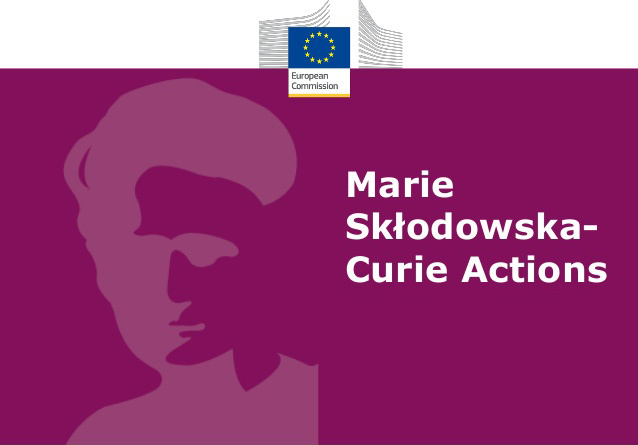About project
Traumatic brain injury (TBI) is the number one cause of disability in children and young adults. Despite well-known mechanisms of secondary brain damage after TBI, effective treatments have not been yet established. Consequently, novel strategies to develop therapeutics which have translational potential are urgently required. One of the major obstacles when trying to treat the brain is the inability of drugs to cross the blood-brain barrier (BBB). Therefore, it is of great importance to develop novel strategies of drug delivery to targeted locations across the intact BBB.
Poly(lactide-co-glycolide) nanoparticles (PLGA NP) are safe and biodegradable drug carriers. When coated with poloxamer188, they are able to cross the BBB. However, the exact mechanisms of penetration, as well as their route to target cells in the brain are currently unknown. To investigate this, the applicant will combine three cutting-edge technologies: novel extra-bright PLGA NP, in vivo two-photon microscopy and whole body clearing (uDISCO). These techniques in combination allow 3D visualization at the sub-cellular level of how PLGA NP distribute throughout the body, cross the BBB and release their cargo in vivo.
These NP will subsequently be used as carriers to deliver multiple neuroprotective compounds with synergistic action into the brain. This technique allows high specificity and potency of therapeutic compounds, while minimizing the risk of side effects.
Ultimately, objective of this approach is to create an optimal novel nano-platform for brain-targeted drug-delivery and based on this, to provide an innovative treatment of TBI that has the potential for clinical translation. Furthermore, the project will enable the applicant to gain extensive knowledge in advanced in vivo microscopy and TBI models, techniques that are well established in the host laboratory, thereby giving him the opportunity to become a leader in this novel field of research running his own research unit in the future.
I want to know more about this..
Poly(lactide-co-glycolide) nanoparticles (PLGA NP) are safe and biodegradable drug carriers. When coated with poloxamer188, they are able to cross the BBB. However, the exact mechanisms of penetration, as well as their route to target cells in the brain are currently unknown. To investigate this, the applicant will combine three cutting-edge technologies: novel extra-bright PLGA NP, in vivo two-photon microscopy and whole body clearing (uDISCO). These techniques in combination allow 3D visualization at the sub-cellular level of how PLGA NP distribute throughout the body, cross the BBB and release their cargo in vivo.
These NP will subsequently be used as carriers to deliver multiple neuroprotective compounds with synergistic action into the brain. This technique allows high specificity and potency of therapeutic compounds, while minimizing the risk of side effects.
Ultimately, objective of this approach is to create an optimal novel nano-platform for brain-targeted drug-delivery and based on this, to provide an innovative treatment of TBI that has the potential for clinical translation. Furthermore, the project will enable the applicant to gain extensive knowledge in advanced in vivo microscopy and TBI models, techniques that are well established in the host laboratory, thereby giving him the opportunity to become a leader in this novel field of research running his own research unit in the future.
I want to know more about this..
Our team
"Coming together is a beginning. Keeping together is progress. Working together is success." --Henry Ford
Our Methods
....we are using the cutting-edge imaging technologies
In vivo 2-photon microscopy

- Two-photon microscopy provides live organism imaging. In our project we will do the imaging of the mouse brain vessels.
- Two-photon microscopy offers two advantages over other live cell imaging techniques: It penetrates up to 1 mm into tissue and it minimizes phototoxicity because the beam excites just a single focal point at a time. In order to excite a fluorophore labeling the tissue, two long-wavelength, low-energy photons must meet nearly simultaneously, combining their energy to create a quantum excitation event
- Imaging in our project is conducted in accordance with institutional guidelines and approved by the Government of Upper Bavaria. 8-week old C56/Bl6J mice are anesthetized and then endotracheally intubated and ventilated in a volume controlled mode (MiniVent 845, Hugo Sachs Elektronik, March-Hungstetten, Germany) with continuous recording of end‐tidal pCO2. Throughout the experiment, body temperature is monitored and maintained by a rectal probe attached to a feedback‐controlled heating pad. A probe is placed in the femoral artery for measurement of mean arteriolar blood pressure and for administration of the fluorescent dye. A rectangular 4×4‐mm cranial window is drilled over the right fronto-parietal cortex located 1‐mm lateral to the sagittal suture and 1‐mm frontal to the coronal suture. Subsequently, an exact fitting rectangular cover glass of 0.175 μm thickness is placed upon the window and fixed onto the skull with dental cement
- I want to know more about this..
Confocal microscopy

- Confocal microscopy is a high resolution microscopy of fixed tissue, labeled by fluorescent markers
- The main advantage is an ability to create a two or three dimensional reconstruction of the images.
- To prepare the brain samples for the confocal microscopy, after sacrificing, the mouse should be perfused by saline followed by PFA solution. Fixed tissues should be kept overnight in PFA solution. Then washed in PBS and embed into 4% agarose in PBS. Vibratome sections should be (50 ~ 100μm thickness). Slices placed into 24 well-plate and permeabilized with 0.1% Tween 20 in PBS for 30-60min at room temperature. Then samles should be blocked 60 min by 10% Goat serum followed by application of primary antibody overnight and secondary antibody for at least 3 hours. After washing in PBS and mounting the samples are ready for the imaging.
- I want to know more about this..
uDISCO and light sheet microscopy
- u DISCO is a method to make biological samples more transparent. This allows to keep the integrity of the whole organ or even body and performing the fluorescent-based imaging using the light sheet microscope.
- The advantages of the method are the ability to validate spatial co-localization of the different cells or molecules inside the organ and more precise histological picture due to avoiding the cutting of the tissue that associated with the additional tissue damages or artifacts.
- For our project we will follow the established protocol. Briefly, The clearing consists of serial perfusions of the whole-body in 5–80 ml of 30 vol%, 50 vol%, 70 vol%, 80 vol%, 90 vol%, 96 vol% and 100% tert-butanol at 34–35 °C to dehydrate the tissue. The mouse body will be put in a glass chamber, and the perfusion needle will be set into the heart through the same pinhole made during tissue preparation in the perfusion setup. Each gradient of dehydration solution will be circulated at 8–10 ml/min for 10–12 h
- I want to know more about this..
Ultrabright nanoparticles

- New concept of fluorescent polymer nanoparticles, doped with ionic liquid-like salts of a cationic dye (octadecyl rhodamine B) with a bulky hydrophobic counterion (fluorinated tetraphenylborate) that serves as spacer minimizing dye aggregation and self-quenching has been established. As such one quantum of energy will be transmitted to each fluorophore throughout the whole particle causing collective behavior, called superquenching.
- For our project we are going to exploit PLGA nanoparticles which are safe and biodegradeble.
- PLGA nanoparticles will be prepared with a specially designed fluorescent dye dissolved in acetonitrile are added quickly to a tenfold volume excess of 20 mM phosphate buffer at pH 7.4 under shaking using a thermomixer followed by second five-fold dilution with the same buffer giving suspension of NP.
- I want to know more about this...
Our publications and presentations


Universe is a nanoparticle inside the brain
Contacts
If you are interested in the project and for any questions related, please call us at
+49 (0)89 4400 46203
+49 (0)89 4400 46203

Adress
Institute for Stroke and Dementia Research (ISD)
University of Munich Medical Center
Feodor-Lynen-Straße 17, D-81377 Munich, Germany
University of Munich Medical Center
Feodor-Lynen-Straße 17, D-81377 Munich, Germany

How to get
We are located near the Klinilum Grosshadern


